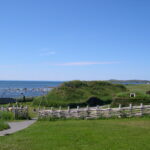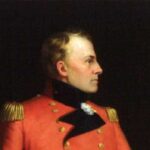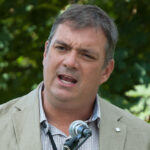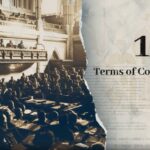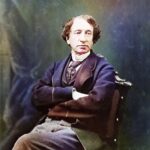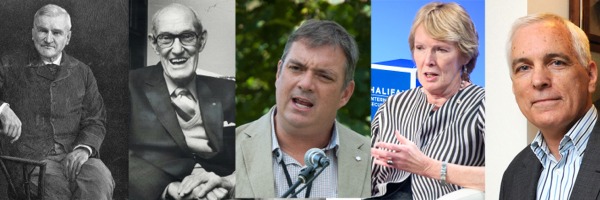The writing of Canadian History
By Greg Scott
History in Canada has always been an act of endurance. In nations born of revolution or conquest, the past is a weapon. In Canada, it is a mirror — reflecting patience, compromise, and the long, cold persistence of identity against indifference. This has shaped not only the nation but also those who have sought to record it. Canadian historians, unlike their counterparts in empires or republics, have written not to celebrate destiny but to explain survival. They are moral witnesses rather than chroniclers of glory, and their prose, often austere and deliberate, carries a quiet conviction that truth is measured not in triumphs, but in continuities.
The tradition begins, paradoxically, with a foreigner. Francis Parkman, the Boston patrician who in the nineteenth century chronicled France and England in North America, was not writing for Canadians at all — yet he provided them with their first mythic architecture. Between 1865 and 1892, Parkman’s seven-volume opus laid out a grand imperial drama upon the northern wilderness. “The wilderness,” he declared, “is an antagonist that subdues the weak, but ennobles the strong.” For him, New France was not a political experiment but a test of character, an act of faith carried out on the edge of the world. His Jesuits were saints and martyrs; his voyageurs, reckless apostles of empire.
Parkman’s vision was steeped in the romantic fatalism of the nineteenth century. He saw the French regime as noble but doomed, the English as practical but unlovely, and the wilderness itself as a moral force — punishing pride, rewarding endurance. His prose was heavy with admiration and cruelty in equal measure. “They fought for empire,” he wrote of Montcalm and Wolfe, “but they perished for destiny.” In his hands, geography became theology. The St. Lawrence was no mere river; it was the axis of a divine struggle between Catholic piety and Protestant vigor.
Canadians would later recoil from Parkman’s imperial assumptions, yet his shadow endured. He had given their landscape a tragic grandeur, their history a cadence. William Manchester, himself no stranger to the tragic imagination, might have called Parkman “a man haunted by civilization’s fragility.” His works suggested that in the northern forest, all human enterprise was provisional — a sentiment that would become the moral baseline of Canadian historiography.
Where Parkman supplied the myth, William Kingsford attempted to supply the record. A soldier, engineer, and civil servant, Kingsford turned in the 1880s to a colossal task — to assemble every document of Canadian colonial history into a coherent narrative. His History of Canada stretched to ten volumes (1887–1898) and was, by modern standards, unreadable. Yet it was also indispensable. “Canada,” he wrote, “must cease to be a collection of fragments and become a whole.” His prose lacked music, but his ambition had nobility. Kingsford believed that the mere act of documentation was patriotic. The accumulation of fact, he thought, could forge unity.
His history was a ledger more than a story, filled with dispatches, census data, and parliamentary minutes. But beneath the monotony lay a profound faith: that order itself was virtue. In a new country haunted by division, Kingsford offered continuity. He created a framework for the Canadian historian as archivist — a figure whose duty was preservation rather than interpretation.
The first to infuse that framework with moral and emotional weight was George M. Wrong, theologian turned historian at the University of Toronto. Wrong saw history not as bureaucracy, but as biography. “History,” he wrote, “is not the chronicle of empires, but the biography of peoples.” His A Canadian Manor and Its Seigneurs (1908) examined a seigneurial family in Quebec not to glorify nobility but to recover humanity. He believed that nations were moral organisms, that to study their past was to study the conscience of their people. “The past,” he told his students, “is a mirror in which nations find their souls.”
Wrong brought the historian out of the civil service and into the university. He professionalized the craft, insisting that archival rigor could coexist with moral insight. His students — including many who would later found the Canadian Historical Association — inherited from him not merely technique, but tone. History, Wrong believed, must be written with sympathy but not indulgence, with judgment but not condemnation. That sense of ethical restraint would mark Canadian historiography for the next century.
From Parkman’s epic imagination, Kingsford’s documentation, and Wrong’s moralism emerged the first distinctly Canadian school of historical thought — one that saw the past as a negotiation between human will and landscape, ambition and restraint. It was a tradition waiting for its architects, and they came in the twentieth century in the persons of Harold Innis, Donald Creighton, and Arthur Lower.
Harold Adams Innis was an unlikely prophet — a shy Ontario farm boy whose early studies of the fur trade and cod fisheries evolved into one of the most original theories of civilization ever conceived. In The Fur Trade in Canada (1930), he proposed that “we have not yet realized that the Indian and his culture were fundamental to the growth of Canadian institutions.” His “staples thesis” argued that Canada’s development was shaped by its exports — furs, timber, wheat — which bound it economically to empires and geographically to nature. “We are,” he wrote, “a nation on the margin of somebody else’s empire.”
Innis’s prose was dense, elliptical, and often forbidding, but his insight was visionary. He saw economic exchange as a form of communication, and communication itself as a structure of power. Long before Marshall McLuhan, Innis observed that “the medium through which a civilization expresses itself determines the bias of its thought.” His later works — The Bias of Communication and Empire and Communications — were austere meditations on how technology and geography shape culture. “Civilization,” he warned, “advances by destroying its environment.” He foresaw, decades before the digital age, that centralized media could erode the equilibrium between center and margin upon which freedom depends.
Where Innis was prophetic and elliptical, Donald Creighton was thunderous and precise. If Innis gave Canada a theory, Creighton gave it a destiny. In The Empire of the St. Lawrence (1937), he declared that “the river was not merely geography; it was destiny.” His prose marched like regiments. He envisioned the St. Lawrence corridor as the spine of a civilization, a highway of commerce and culture that defined the nation’s soul. “The St. Lawrence,” he wrote, “was the cradle of our greatness.”
Creighton’s Canada was a drama of will. He admired the men who built the canals and railways, who forced order out of wilderness. “They were,” he said, “builders in a land that rewarded persistence more than imagination.” He despised what he saw as modern complacency — a people who, as he put it bitterly, “have turned their backs upon the river and looked instead to the easy promise of the republic.” To his admirers, Creighton was the conscience of Confederation; to his critics, a nationalist patriarch. Yet all agreed on his artistry. His sentences had the rhythm of oratory, his paragraphs the architecture of argument. “He wrote,” Ramsay Cook observed, “as if chiseling the creed of the nation.”
Innis and Creighton respected but distrusted one another. The older scholar saw Creighton’s nationalism as sentimental; Creighton found Innis’s materialism bloodless. Yet together they forged the intellectual pillars of mid-century Canadian thought — geography, economy, and nation. Between them stood Arthur R. M. Lower, the liberal humanist who sought to reconcile both.
Lower’s Colony to Nation (1946) offered a gentler vision. “The Canadian story,” he wrote, “is not one of heroes but of communities.” For him, history was not a march of empires but an education in democracy. “We have built,” he said, “a civilization of compromise rather than conquest.” His prose was supple, ironic, and humane, infused with quiet pride in the ordinary. “If we have no Caesars,” he once quipped, “perhaps it is because we have no need of them.”
Lower believed that freedom in Canada lay in moderation, that its greatness resided not in glory but in civility. In this he anticipated the later social historians: he wrote not of generals, but of citizens; not of dominion, but of belonging. In an age when the world worshiped ideology, Lower’s Canada was resolutely pragmatic — a society that survived by negotiation rather than dogma.
Together, Innis, Creighton, and Lower defined what might be called the moral high tide of Canadian historiography. Their quarrels were ideological, but their purpose was common: to explain how a small, cold, bilingual, and regionally divided country could possess a coherent identity. Between them, they gave the nation an intellectual constitution — Innis’s geography, Creighton’s nationhood, Lower’s liberal conscience.
By mid-century, however, the historian’s voice began to move out of the university and into the public square. The age of the academic was joined by the age of the chronicler — the journalist-philosopher who wrote for the common reader. Chief among them were Bruce Hutchison and Pierre Berton.
Hutchison, a West Coast newspaperman of Puritan dignity, wrote with a moral authority that made him a secular prophet. In The Unknown Country (1942), he lamented that “Canada is a land still being invented, and its people still wondering who they are.” His essays were meditations on national conscience. “We are,” he wrote, “a nation of good intentions delayed.” He saw politics as moral theatre — flawed men struggling against apathy, geography, and indifference. For Hutchison, the historian’s task was to awaken civic virtue. “Without memory,” he warned, “a democracy decays into a market.”
Where Hutchison spoke in sermons, Pierre Berton wrote in fireworks. The most popular historian Canada ever produced, Berton believed that history must be felt. His Klondike, The National Dream, and Vimy transformed archival events into epic narrative. “The past,” he said, “belongs to those who can bring it alive.” His prose had pace, clarity, and cinematic sweep. He could describe a Yukon frost or a trench assault with sensory immediacy: “The snow swallowed sound,” he wrote of the gold rush, “and men walked like ghosts beneath a frozen sky.”
Berton’s detractors accused him of populism, but they missed the moral depth beneath the showmanship. “I write,” he said, “because Canadians have forgotten that they have heroes.” His heroes, however, were not emperors but workers, settlers, soldiers — ordinary people who “built a nation by accident.” In Vimy (1986), he wrote that “they discovered, not victory, but themselves.” That single line encapsulated his creed: that history’s meaning lies not in triumph but in self-knowledge.
As Canada entered the latter half of the twentieth century, its historians faced a different challenge — not to create identity, but to interpret its fragmentation. The nation had matured, diversified, and begun to doubt its own narrative. In this new era rose J. M. S. Careless, Ramsay Cook, Desmond Morton, and Jack Granatstein — scholars who dismantled the old certainties while preserving their moral weight.
Careless, urbane and precise, introduced the idea of limited identities — that Canadians could belong to several communities at once. In Canada: A Story of Challenge (1953), he argued that “ours is a mosaic of regions, bound together by endurance.” For him, national unity did not require uniformity. “We are a people,” he said, “who have learned to live comfortably with complexity.” His view replaced the old search for destiny with a more plural and democratic vision — the historian as interpreter of diversity.
Ramsay Cook, with wit as sharp as a scalpel, distrusted all dogma, even patriotic ones. In The Regenerators (1985), he examined Canada’s early reformers not as saints but as flawed thinkers shaped by context. “We must not,” he warned, “confuse the longing for virtue with the fact of it.” Cook rejected nationalism as moral certainty. “History,” he said, “is a conversation, not a catechism.” His skepticism rescued the discipline from sentimentality and forced it into maturity.
Desmond Morton, soldier-turned-scholar, restored the moral center by returning to war. His A Military History of Canada (1985) stripped combat of romance but not of meaning. “Canada did not seek greatness in war,” he wrote, “but discovered resilience.” Morton believed that the measure of a nation lay in its remembrance. “A democracy,” he said, “is tested not by its victories but by what it remembers of them.”
Then came Jack Granatstein, impatient, combative, and utterly sincere. In Who Killed Canadian History? (1998), he accused academia of surrendering national memory to ideology. “We are,” he thundered, “a nation in danger of forgetting itself.” For Granatstein, history was a civic duty, not a pastime. “Without memory,” he wrote, “a country is merely real estate.” His anger was patriotic; his lament, prophetic. In a culture of amnesia, he became its unrepentant conscience.
Finally, the modern heirs — Margaret MacMillan and Charlotte Gray — brought Canadian history full circle, joining scholarship to storytelling with elegance and empathy. MacMillan, in Paris 1919, explored diplomacy as moral art. “History,” she wrote, “is never a single story; it is the weaving of many strands, each true and each incomplete.” Her later reflections on leadership and conflict — The War That Ended Peace, History’s People — turned historical understanding into moral reflection. “We study the past,” she said, “not to predict, but to understand ourselves.”
Charlotte Gray, in Sisters in the Wilderness and The Promise of Canada, carried that same torch into the national heart. “Canada,” she wrote, “has always been a country of margins — of those who came late, or stayed behind.” Her prose is tender, her scholarship exacting. She treats history as an act of empathy. Where Creighton saw destiny, she sees humanity. Where Innis saw systems, she sees stories. In doing so, she gives voice to the silenced and restores the historian’s most sacred task: compassion.
Tim Cook (born 1971) is one of Canada’s foremost military historians, serving as Chief Historian and Director of Research at the Canadian War Museum. He has authored numerous books on Canada’s participation in the First and Second World Wars, and has been honored with awards such as the C.P. Stacey Prize and multiple Ottawa Book Awards. His scholarship is significant for its blend of rigorous archival work, narrative fluency, and commitment to making military history accessible to the broader public. In doing so, he has helped sustain and rejuvenate the “military history school” in Canada — not only by deepening our collective understanding of Canada’s wars, but by mentoring younger scholars, shaping museum practice, and advocating for memory and commemoration as ongoing public conversation.
Tim Cook (born 1971) is one of Canada’s foremost military historians, serving as Chief Historian and Director of Research at the Canadian War Museum. He has authored numerous books on Canada’s participation in the First and Second World Wars, and has been honored with awards such as the C.P. Stacey Prize and multiple Ottawa Book Awards. His scholarship is significant for its blend of rigorous archival work, narrative fluency, and commitment to making military history accessible to the broader public. In doing so, he has helped sustain and rejuvenate the “military history school” in Canada — not only by deepening our collective understanding of Canada’s wars, but by mentoring younger scholars, shaping museum practice, and advocating for memory and commemoration as ongoing public conversation.
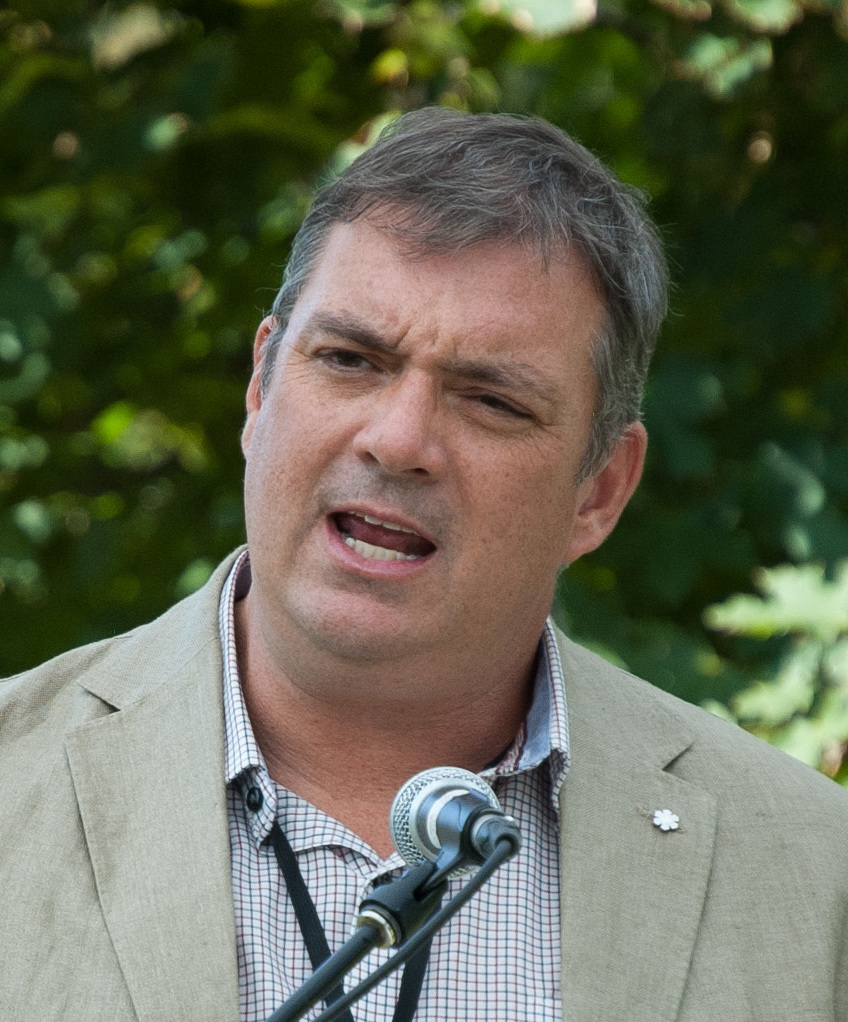
Across this long lineage, Canadian historiography reveals not evolution but dialogue — a century-long conversation between determinism and freedom, faith and skepticism, destiny and doubt. Parkman’s wilderness, Innis’s geography, Creighton’s river, Lower’s community, Berton’s crowd, MacMillan’s diplomacy — all are facets of the same enduring question: what does it mean to be Canadian?
Their answers differ, but their impulse is shared. They write not to glorify but to reconcile; not to proclaim, but to understand. In that sense, they have produced a uniquely moral historiography — one that mirrors the nation’s own temperament: restrained, persistent, deeply humane.
As Bruce Hutchison observed, “We have no saints and few heroes, but we have the long courage of ordinary people.” That line, perhaps more than any other, defines Canada’s historians themselves. They are not empire-builders, but custodians of endurance. They have written a civilization into existence by patience alone.
And when the archives fall silent and the footnotes turn to dust, what will remain is their gift — the conviction that a people without monuments may yet possess a history, and that history, if told with conscience, can be a form of grace.


